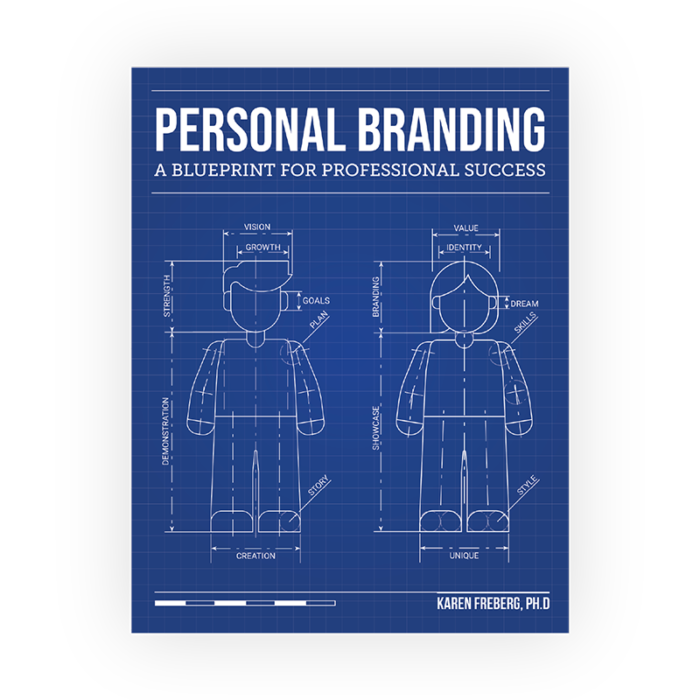Have you ever listened to a group of musicians who possessed incredible talent but couldn’t quite advance past local gigs and a limited following? Great skill, but limited success is surprisingly common in all occupations.
But why?
Professor Karen Freberg, author of ”Personal Branding: A Blueprint for Professional Success,” gives this insight: “It is not only about what you know, but who knows you and what you stand for.”
Personal branding is no longer just a good thing to do. It has become a powerful ingredient for getting noticed, getting followed, and even for getting a job. Whether you’re a student, instructor, or CEO, personal branding is a tool for getting past doors others can’t open.
What Is Personal Branding?
Let’s say your employment aspiration is to excel as a Google Ads professional — yet your online presence focuses on your baseball talents. You’re “branded” for baseball, not for advertising. Your brand determines how you appear to others both online and off. The chances of someone hiring a baseball player to handle their Google Ads account aren’t high.
And while it is good to have interests outside of your professional purview, how you present yourself and through what channels matter. So does alignment with your online presence and your offline behavior. Those who present interests and capabilities that aren’t inline with their “real selves” are often accused of being “two-faced.” Displaying a separation between your professional identity and your digital presence creates confusion, and trust can be lost.
All of these factors are elements of a personal brand, but there is more for consideration. Here’s how Karen’s new courseware describes personal branding: “A personal brand is the collection of perceptions, associations, personality characteristics, interests, and areas of expertise a community or industry associates with an individual person.”
How To Become a Personal Branding Champion
Stukent partnered with Karen to give students access to tools and tactics for building a powerful personal brand. Karen’s own influence is certainly related to her own education and work, but she’ll be the first to reveal that personal branding has much to do with her success.
Her “Personal Branding” courseware includes material to help boost student marketability by giving attention to areas such as writing, research, strategic planning, problem-solving, creative thinking, mentorship, and digital media.
By leveraging the Stukent personal branding courseware for their classes, instructors can present assist students to develop skills to augment both their professional and personal development:
Implementing Best Practices
What elements are critical to a successful brand? How do you help grow a community? Using the right tools and approaches that align with your strengths, interests, and goals are all part of personal branding.
Identifying Risks and Challenges
Once you stake your claim, people expect you to live up to the persona you’ve created. What if your brand is aimed at one niche and you decide to switch courses? What if you do or say something contrary to your brand and get pushback (or downright antagonism) from others?
Choosing and Developing a Brand Voice
This is one of the most important elements to consider. Moreover, brand voice and brand tone are often confused. Knowing how to implement each can make a huge difference in how you are perceived.
Creating a Strategic Plan
A strategic plan for a personal brand is crucial. As with many other aspects of digital marketing, the strategic plan clarifies the work and gives you a definite path to follow. Stukent’s “Personal Branding” courseware lays out the steps to brand building and provides a recipe for success.

Networking Is an Art and a Science
Networking is both an art and a science. Communicating with others helps build connections and opportunities, and so does utilizing data regarding your field and brand. You must take yourself on as a client. Gather recommendations, insights, and data. Analyze the information.
Building the Relationships and Brand Partnerships
Karen is skilled at creating partnerships with major brands. In this courseware, she shows students how to forge relationships and connect with brands.
Measuring Your Progress
What you think is the correct approach to branding may not deliver the best results. But how do you determine which tactics are working and which aren’t? This courseware addresses the measurement of a personal brand.
Applying Personal Branding to Job Interviews and Professional Opportunities
Karen shows students how to incorporate their personal brand into resumes and portfolios. The courseware also includes best practices for approaching potential employers.
How to Gain Access to This New Stukent Courseware
Personal branding is a valuable tool for any individual, but especially students who are crafting their resumes, portfolios, and ultimately their professional identities. The “Personal Branding” courseware pairs with the Mimic Personal Branding simulation to prepare students for real-life situations and to help them build out their brands step-by-step.
Instructor resources include a complete set of lesson plans, lecture slides, and quiz review slides. The courseware also includes chapter tests, a midterm test, and a final test. Instructors can, of course, edit the resources as needed.
Get instructor access to the material or schedule a personal demonstration of the courseware via this link: ”Personal Branding: A Blueprint for Professional Success.”







